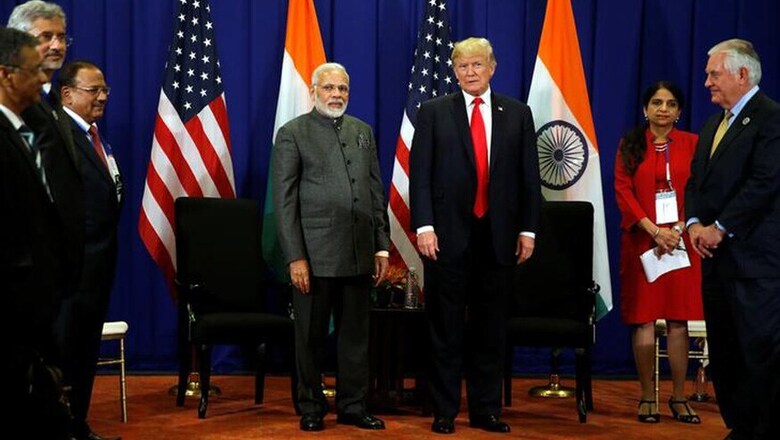
views
New Delhi: There’s renewed focus on the idea of ‘The Quadrilateral’ after a meeting of officials of India, US, Japan and Australia on the sidelines of the ongoing ASEAN summit in Manila. To be sure, the idea of the Quad is not a new one. It’s just old wine in a new bottle.
The Quad, or a coming together of the great big democracies in the Indo-Pacific, was an idea first mooted by Japanese Prime Minister Shinzo Abe during his first term as PM in 2007. He had referred to the Quad in a speech to the Indian Parliament.
There was even a meeting of officials of these four democracies, ironically in Manila which is once again playing host. That initiative didn’t go too far after a predictably angry response from Beijing. It’s easy to see why this would be seen by Beijing as a ‘contain China’ alliance. The first attempt was called off by the then Australian Foreign Minister while he was on an official visit to Beijing!
Here’s why the Quad is going to be a difficult idea to sell. And it’s got to do with ‘selling’ or more specifically International Trade. Here’s how much each of these four countries trade with China.
USA: Over 500 billion USD
Japan: 300 billion USD
Australia: 135 billion USD
India: 75 billion USD
The total value of trade of these four countries with China is over a trillion dollars. That is way too much money to be ignored or contained.
Back in the Cold War period it was entirely possible to build military and economic alliances meant explicitly to target the Soviet Union or the US because there was so little international trade with ‘The Other’. NATO itself is a classic example of this.
In China’s case, particularly after its admission into the WTO (World Trade Organization), it has become not just a part of the international trading arrangement, but very much the fulcrum of it. China is today the world’s largest trading nation. It is nigh impossible to ‘contain’ such a nation.
Here’s why this second attempt at the Quad is also likely to fail. For starters, this was a meeting at the joint secretary level for India. Not even at the secretary or ministerial level, forget about the head of government level.
Two, there was no joint statement issued at the end of Sunday’s meeting in Manila. Each of the four countries put out separate statements emphasising what their respective priorities are.
For example, India’s statement does not mention anything about freedom of navigation or respect for international law or maritime security in the choppy waters of the South China Sea. Neither was India’s statement big on calling out North Korea by name. Instead, it just had a cursory reference to nuclear proliferation.
But the other countries, the US and Japan in particular, were pretty sharp in their language on both these issues. It clearly shows the different priorities for each of these countries.
Already, Beijing has warned that this grouping should not target third countries or should not be intended to keeping some countries out. Democracy is too thin a glue to bind these countries together. After all, each country has to lookout for its own “national interest” as opposed to some flaky idea of “shared values”.
The other reason why the Quad could come undone is since these four countries are democracies, there can always be a change of government in the future which may be less enthusiastic about taking on China. As it happened in the case of Australia when the China-friendly Kevin Rudd took office in 2007 and the Quad came off the rails. The Quad may still have a second coming, a second life, but don’t bet on it. Just yet.
















Comments
0 comment